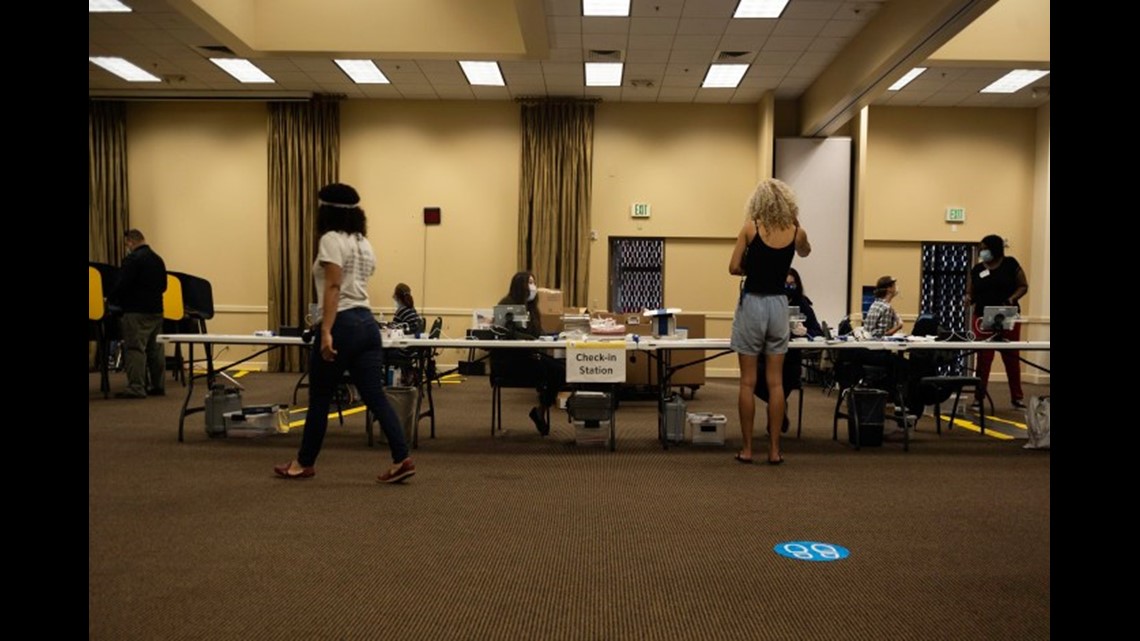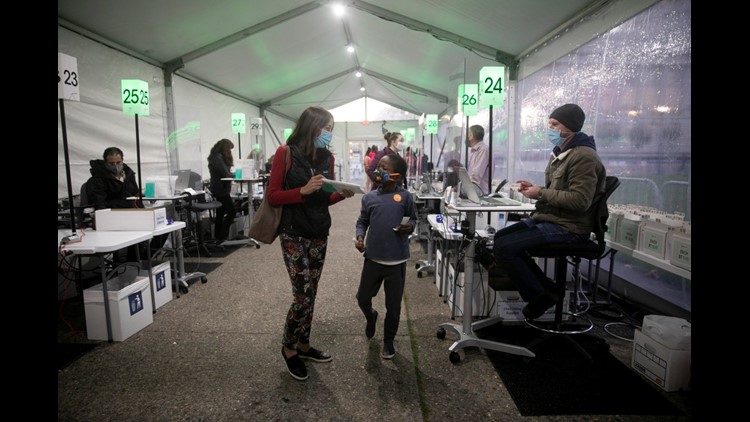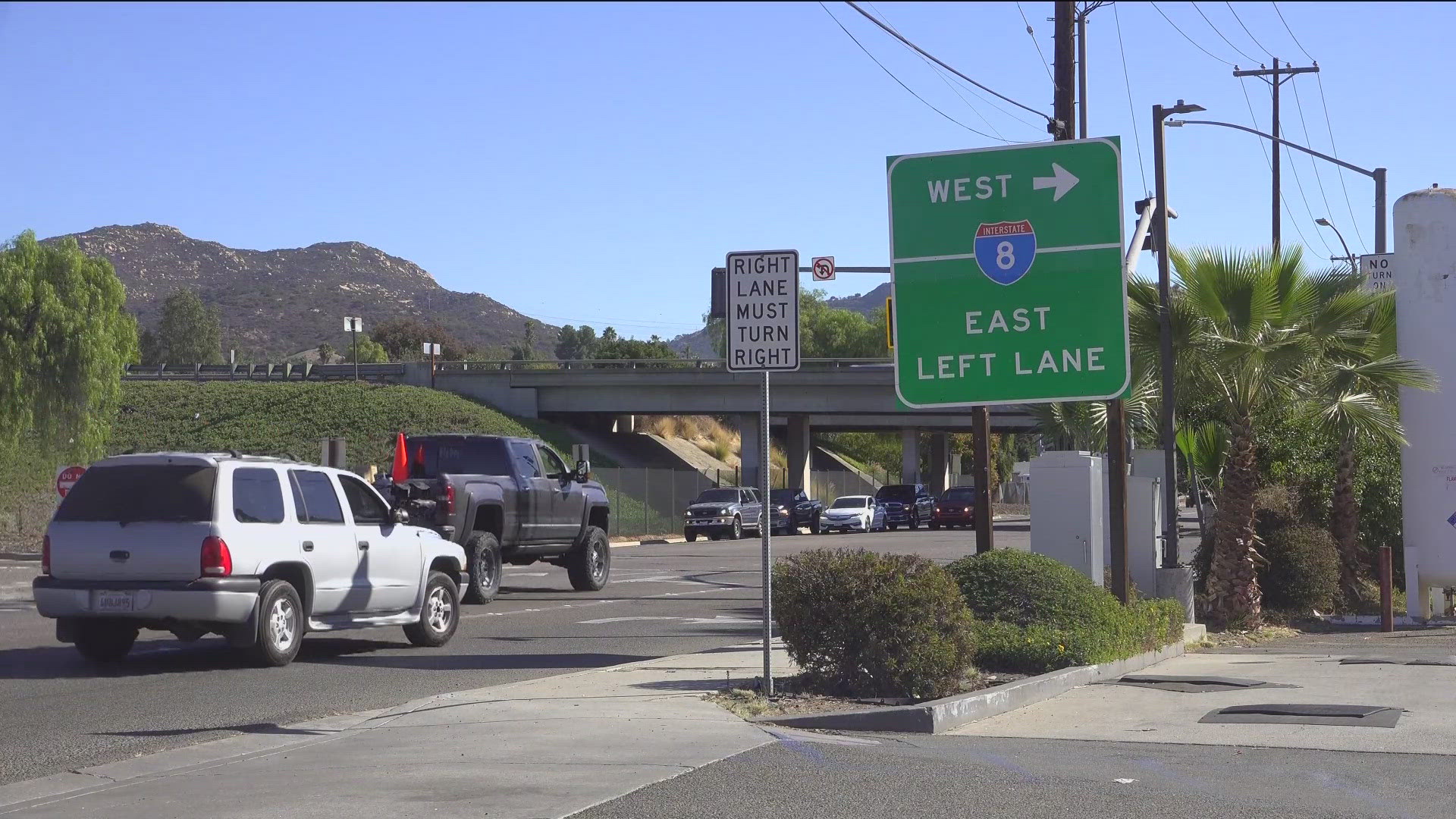Mono County tried its hand at new election technology during the March 2020 primary but then the internet cut out. For the general election, it reverted to old-fashioned paper voter rolls.
Most of the state’s 58 counties followed suit this election, choosing to use technology and some form of vote center. It turned out to be critical infrastructure to support California’s pandemic-inspired decision to mail ballots to every registered voter. Forty-eight counties responded to a CalMatters survey, with many registrars attributing a smoother election to the new approach. Now that politicians in Sacramento are talking about making vote-by-mail permanent and expanding vote centers, though, some local officials are worried about cost given vote center usage.
The vote centers were possible this year because of the 2016 Voter’s Choice Act, intended to increase turnout by allowing more ways to cast a ballot. Voters could receive a mailed ballot that could be returned via mail or in an election drop box. They could vote early at a voting center or on election day. Fifteen counties —including Los Angeles and Orange— had opted into the Act and its perks. The pandemic prompted another 24 counties like Riverside and Sonoma to try on similar changes by having flexible-use vote centers for early voting.
“We can now say, I think, with confidence that the voting model we’ve adopted in L.A. County is sustainable,” said Los Angeles County Registrar Dean Logan. “From a 95-year-old voter to a generation Z voter and everything in between, the system worked as it was designed and it got overwhelmingly positive reviews in its utility and in the intuitive ease of its use.”
Kiyana Asemanfar, program manager for California Common Cause, assessed California’s election this way: “The experience in this last election will nudge more counties to adopt it in 2022.”
Technology is key
Central to vote centers’ success are electronic poll books, which instantly look up any voter’s information from any center in the county, including if they voted already, the correct ballot for their address and more. They are why counties with vote centers saw huge drops in provisional ballots.
That ease of voting is the intention of the Voter’s Choice Act.
“It’s crazy that in this modern era, people living the busy lives that they live, that we had a vote model that says that you could only vote in one place on one day, between certain hours, as opposed to offering people flexibility,” said state Sen. Ben Allen, D-Santa Monica, author of the Voter’s Choice Act.
Assemblyman Marc Berman, D-Menlo Park, plans to take the next step to ease voting; he will introduce legislation to mail California voters their ballots each election.
But permanently mailing ballots could pose hurdles for counties forgoing vote centers and their savvy technology. Imperial and Lake counties saw hiccups this election after many voters didn’t know they needed to bring and surrender their mailed ballot to vote in person. Without electronic poll books to confirm they hadn’t already voted, it meant more provisional ballots and more forms to fill.
“We saw long waits at the polling site that were not normal compared to other previous elections,” said Linsey Dale, Imperial County public information officer. “Many of our voters were not accustomed to receiving that mail-in ballot.”
Asemanfar, of California Common Cause, said, “We all kind of experienced what (the Voter’s Choice Act) looks like this year…This kind of gave them an opportunity to try whether they want to stick to something like it or if they want to stick to the previous model.” Her organization convenes registrars, advocates, and Secretary of State officials to help counties transition to the Act.
San Diego County, among the state’s most populous, has yet to opt into the Act after conducting a feasibility study in 2019. San Francisco is readying a similar report and registrars in Riverside, Sonoma, Shasta and more also have said they are considering opting in.
The decision to join is up to a county’s board of supervisors. “If a group of voters wanted to take it upon themselves to kind of push for their county to adopt it, they could advocate for their county to become a VCA county,” Asemanfar said.
Still, some smaller, rural counties lack the infrastructure and internet access to opt in.
“It would be very difficult for us to have vote centers here because of the rural nature of our county,” said Terry Hansen, registrar of voters for Yuba County, which has about 40,000 registered voters. “We don’t have large buildings, we don’t have reliable internet service, especially in the foothills, and we don’t have public transportation.”
Costs ‘worth it in the long term’
In Madera County, Registrar Rebecca Martinez said in 2018 that the county saved between $400,000 and $600,000 when it implemented the Act and needed less voting equipment. Nevada County’s registrar anticipated savings this year of $1 million before the pandemic hit. For the 2020 election cycle, counties found even greater relief: $18 million in state and federal support was available for help with Act-related costs.
Equipment costs under the Act typically include electronic poll books and ballot-on-demand printers, which can be paid for by counties, with matching state and federal funds. The Act also requires at least three voting machines accessible to voters with disabilities per vote center. Sam Mahood, the Secretary of State’s press secretary, told CalMatters in an email, “We will be doing a county by county assessment on total costs after the certification of this election looking at the total costs for this election cycle for the implementation of the VCA.”
So far, counties report widely varying costs to adopt the Act.
Orange County, for instance, bought 1,120 electronic poll books at $360 per device and more than 600 accessible ballot marking devices, or voting machines, at about $5,000 each.
Because Sacramento County implemented the Act early on, no electronic poll books were certified yet. It instead bought 300 laptops for about $1,200 each. The county deployed 268 ballot marking devices during the election, each costing $2,500.


The Act requires more than just new equipment. It requires counties to consolidate traditional neighborhood polling places into fewer vote centers. That can mean cost-savings for some counties.
“It’s not as expensive as traditional polling places because there are fewer locations and fewer poll workers,” said Donna Johnston, Sutter County’s clerk-recorder. The county did not opt into the Act but consolidated five polling places this election, each open for early voting days.
But some worry about multiday costs of early voting at the centers, which typically also are larger.
“It costs money to rent locations for 11 days… as opposed to using a fire station for a day or using a school gym for a day,” said Deva Proto, Sonoma County Registrar of Voters.
The Act’s upfront costs scared off Sonoma officials at first. But when the pandemic hit, the county experimented with centers this fall after it couldn’t use its usual polling places. Officials and voters liked the flexibility.
“CARES Act funding helped with those upfront costs. So if we move to the VCA in the future, we have some of the upfront costs already taken care of,” Proto said. “After this election is certified, we will evaluate the success of the model.”
Allen, the Voter’s Choice Act author, said he anticipated rural counties might face hurdles with the Act and that’s why it is an opt-in model. But most counties delayed upgrades while waiting for the state to revamp elections, allowing them to invest in the new system “rather than double down on a system that was old and antiquated.”
Counties that already implemented the Act see the investment as a win-win, he said. “They realize that the upfront investment would be very much worth it in the long term, both in terms of cost savings and increases in voter turnout and voter flexibility.”
Mailed ballots driving turnout
California’s historic turnout was largely fueled by voters using their mailed ballots during this election year pandemic. In the Voter’s Choice Act counties of Los Angeles and Orange, for instance, only 21% and 17% of voters chose to cast their ballot in person, respectively. Los Angeles County saw more than 4.3 million ballots cast, its largest number ever as well as the most of any local jurisdiction in the nation.
Less than 10% of voters in Madera County, also under the Act, chose to vote in person in the March primary and in the recent election. Since vote-by-mail is so popular, some officials say vote centers may not be worth the cost or hassle.
“There’s not a huge payoff in terms of voters coming in based on data from other counties that have been part of the Voter’s Choice Act,” said Proto, the Sonoma County registrar. She estimated about 4% of registered voters voted in person in her county.
“We only had 7,000 people go to our 10 voter assistance centers,” said Candace Grubbs, Butte County’s registrar of voters. “So they were hardly used for that matter. We put a whole lot of money into it, bought a whole lot of COVID stuff, hired a lot of people.”
Registrars in Fresno and Sutter County suggested cutting back on the number of days a vote center is required to be open, which under the Act can be up to 11 days.
Yet Asemanfar said her group’s Election Protection Program has observed perks with the early voting period, including the ability to fine-tune technology and fix errors without the crush of voters around. It’s also a chance for local groups to turn out the vote by holding community events around vote centers, she said.
“We just need to acknowledge that it’s a new model, and a lot of voters are learning about it for the first time,” Asemanfar said. “There are a lot of conversations taking place for what the next steps might be for California.”



